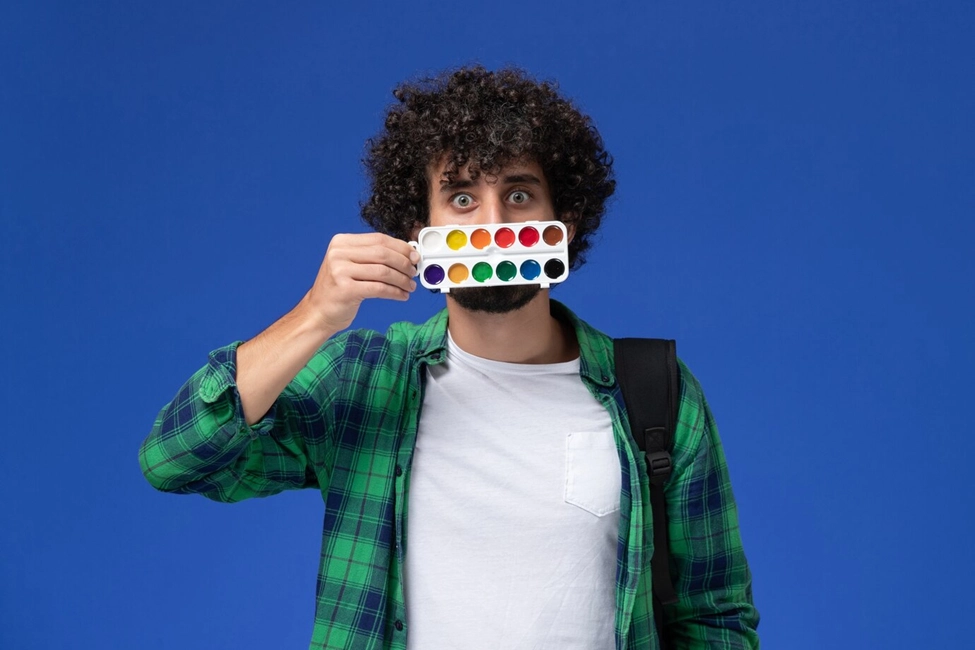Color is integral to our daily lives, influencing our emotions, decisions, and overall world perception. From the calming blue of a clear sky to the invigorating red of a stop sign, colors profoundly impact our moods and behaviors. Understanding the psychology of it is crucial for individuals looking to enhance their personal environments and businesses aiming to influence consumer behavior and create impactful branding.
Today, color psychology is a well-established field that intersects with various disciplines, including marketing, design, and environmental psychology. According to www.verwellmind.com, the knowledge gained from this field is applied in numerous ways, from creating therapeutic environments in hospitals to designing effective marketing campaigns.
The Basics of Perception
Its perception begins with the interaction between light and the human eye. When light hits an object, specific wavelengths are absorbed while others are reflected. The brain processes signals from these cones to create the perception of color. Various factors, including lighting conditions and individual differences in vision, influence this process. Additionally, cultural and contextual factors significantly affect how we interpret the hues.
Psychological Effects of Primary Colors
- Red – Dynamic and stimulating, red is associated with excitement, passion, and energy but can also evoke anger and danger. It is effective in capturing attention and stimulating appetite.
- Blue – Calming and trustworthy, blue promotes relaxation and reduces stress but can also evoke sadness. It is often used to convey professionalism and reliability.
- Yellow – Bright and cheerful, yellow signifies happiness and optimism but can lead to anxiety if overused. It captures attention and stimulates mental activity.
- Green – Symbolizing nature and tranquility, green has a calming effect and promotes growth but can also represent envy. It is beneficial in stress-reducing environments.
- Purple – Associated with luxury and creativity, purple stimulates imagination and introspection. Historically linked to royalty, it evokes a sense of mystery.
- Orange – Combining energy and warmth, orange promotes enthusiasm and social interaction but can be overwhelming in excess. It is famous for active and social settings.
The Role of Color in Marketing and Branding
Colors are pivotal in marketing and branding, as they can significantly influence consumer behavior and perception. Companies meticulously choose coloring for their logos, packaging, and advertisements to evoke specific emotions and associations that align with their brand identity.
It can affect how consumers perceive a brand’s personality and value. Research shows that people subconsciously judge a product within 90 seconds of initial viewing, and up to 90% of that assessment is based on color alone. Warm hues like red, orange, and yellow can create a sense of urgency and are often used in clearance sales. Cool tint like blue and green are more calming and are frequently used by brands aiming to convey trust and dependability.
Effective use can also enhance brand recognition. Consistent use of color can increase brand recognition by up to 80%, making it a powerful tool for brand differentiation and loyalty. Successful companies leverage its psychology to create strong emotional connections with their audience, influencing everything from purchasing decisions to brand loyalty.
The Influence of Color in Fashion and Personal Style
It play a significant role in fashion, influencing how we feel and others perceive us. Our clothing choices can reflect our personality, mood, and even cultural background. Different hues and tints can have varied psychological effects, making them powerful tools for self-expression and personal branding.
For example, a custom made tshirt offers a unique opportunity to harness the psychology of color in personal fashion. By selecting specific hues, individuals can create custom apparel that fits their style, enhances their mood, and conveys their desired message.
Here’s an overview of the emotional and psychological impact:
- Wearing red can evoke feelings of confidence, power, and passion. It’s often chosen when one wants to stand out or make a bold statement.
- Blue clothing tends to convey calmness, reliability, and professionalism. It’s a popular choice for job interviews and professional settings.
- This bright hue can communicate happiness, energy, and optimism. It’s often worn to lift spirits and create a cheerful impression.
- In many Western cultures, white symbolizes purity and is commonly worn for weddings and formal occasions. In contrast, in some Eastern cultures, white is associated with mourning.
- Black is a versatile shade that can denote sophistication and elegance. It’s often chosen for formal events but can signify mourning in many cultures.
Color is a powerful tool that profoundly shapes our perception and mood. By understanding the psychological effects of different hues, we can make informed choices that enhance our environments, influence our behavior, and improve our overall well-being. From ancient theories to modern scientific research, the study of color psychology reveals how it impact our emotions and actions.
Whether designing a living space, crafting a marketing campaign, or choosing an outfit, the principles of color psychology provide valuable insights into how we interact with the world. By experimenting with and thoughtfully applying these principles, we can use it to positively influence our lives and the lives of those around us.
